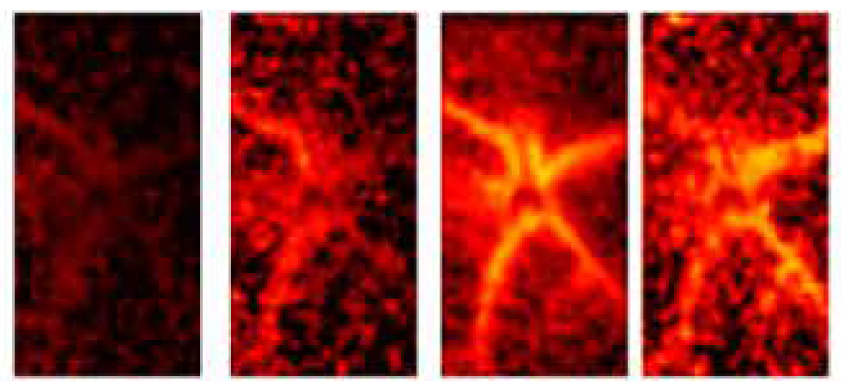
THIS ARTICLE IS MORE THAN FIVE YEARS OLD
This article is more than five years old. Autism research — and science in general — is constantly evolving, so older articles may contain information or theories that have been reevaluated since their original publication date.
A new tool marries an unusually bright fluorescent protein to a light-sensitive pigment to illuminate individual neurons as they fire. The approach, described 19 November in Science Express, could shed light on neuron signaling abnormalities in autism1.
Neurons send signals through the brain in milliseconds. Researchers can indirectly observe these rapid electrical bursts by monitoring the influx of calcium ions, which cause neurons to fire. But calcium levels fluctuate slowly, so this method gives only a blurred glimpse of the energy coming from individual neurons.
The new tool captures electrical pulses within individual neurons without relying on calcium. It consists of two fused proteins: the brightest fluorescent protein described to date, dubbed mNeonGreen, and a light-sensing pigment called rhodopsin, which is derived from green algae.
From a neuron’s surface, the pigment senses an electrical pulse, absorbs the wavelengths and transfers energy to the fluorescent protein, which emits a bright yellow light.
The protein pair can detect electrical surges in just 0.2 milliseconds — far surpassing the 50-millisecond resolution of traditional sensors. And because mNeonGreen is so bright, it can be viewed under a gentle light rather than the hot, harsh lights needed to activate other fluorescent proteins.
The researchers engineered mice and fruit flies to express the protein pair in their neurons. To get a good view of the glowing neurons, they inserted a glass window in the skull of each mouse and in the protective cuticle covering the brain of each fly.
They used the new technique to measure neuron firing in immobilized mice and fruit flies as the animals watched moving images on a video screen or sniffed odors. Through the glass windows, the researchers could observe and time the flashes of neuronal activity with a standard fluorescent microscope.
The tool can track neuron firing for up to 10 minutes before the rhodopsin’s sensitivity to electromagnetic energy fades and the fluorescent protein loses its glow. This approach could allow researchers to examine neural circuits in greater detail than has previously been possible and tease out how disruptions to these circuits contribute to autism and other neurodevelopmental conditions.
By joining the discussion, you agree to our privacy policy.